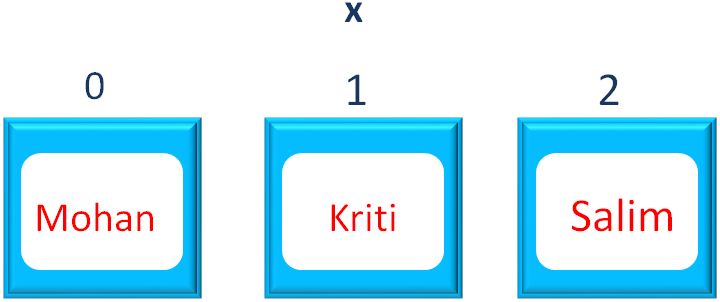

As we have seen the implementations of a List are :
Let us see the ArrayList implementation first.
Let us say, we have a List that contains three names, Mohan, Kriti and Salim. And we want to replace the name Kriti with a new name Paul.
import java.util.ArrayList;
import java.util.List;
public class MyApplication {
public static void main(String[] args) {
List x = new ArrayList<>();
x.add("Mohan");
x.add("Kriti");
x.add("Salim");
x.set(1,"Paul");
for (String data : x) {
System.out.println(data);
}
}
}
So, in the above code we have created an ArrayList x.
Listx = new ArrayList<>();
Now, let us see, how the values are positioned in the List

Now, if we see the above diagram, Kriti resides at position/index 1. So, what we do is, just replace the position/index 1 (i.e. x.set(1,"Paul")) with the new name Paul, using the set() method.
x.set(1,"Paul");

And we get the below output,
Next, let us see the implementation using LinkedList. It is exactly similar to ArrayList.
Let us say, we have a List that contains three names, Mohan, Kriti and Salim. And we want to replace the name Kriti with a new name Paul.
import java.util.LinkedList;
import java.util.List;
public class MyApplication {
public static void main(String[] args) {
List x = new LinkedList<>();
x.add("Mohan");
x.add("Kriti");
x.add("Salim");
x.set(1,"Paul");
for (String data : x) {
System.out.println(data);
}
}
}